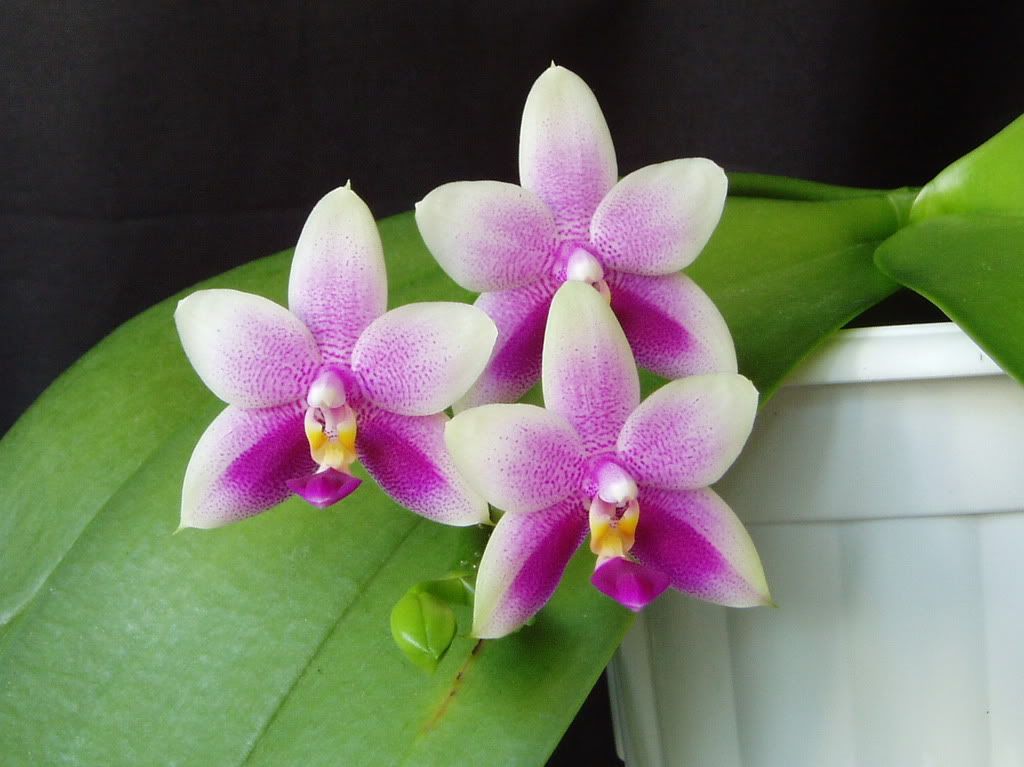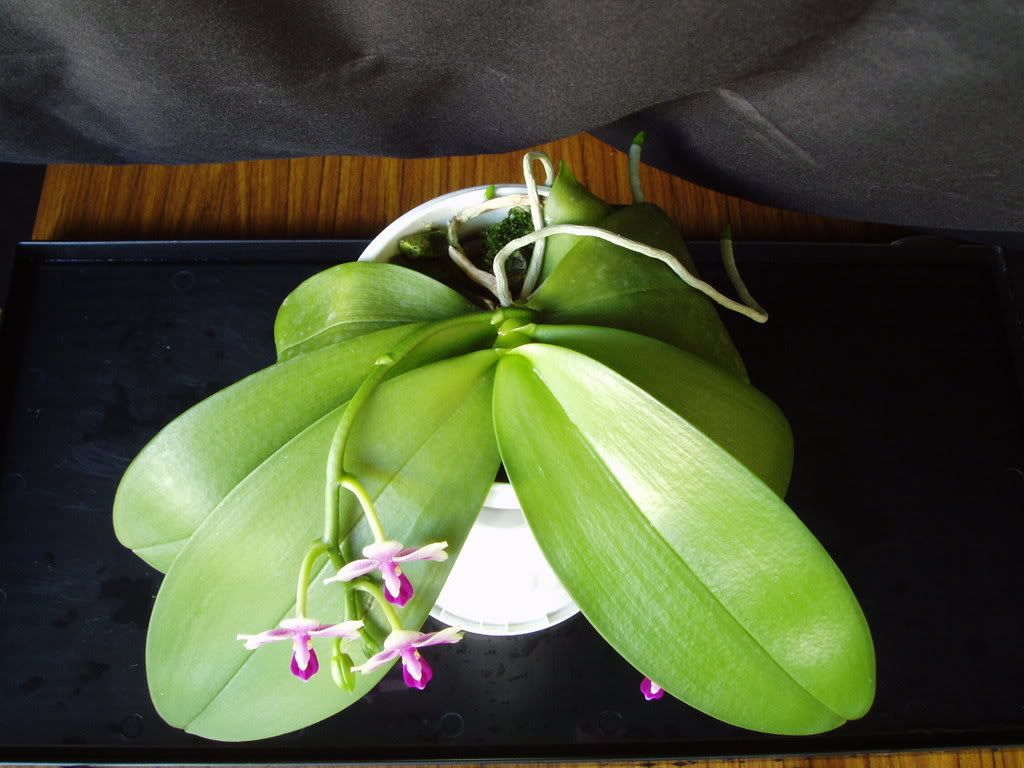A white plastic pot is used so that the roots will not get over-heated in the direct morning sun. Lighter colored pots are capable of reflecting off more radiation from the sun than darker colored ones, hence reducing the chances of getting root burns (black pots can get burning hot in the sun).
Medium comprises a bottom layer of medium-sized diatomite (for drainage), followed by an inch of sphagnum moss layer (for moisture retention), more diatomite on top of the moss layer (for air circulation to roots and drainage) and finally an extremely thin layer of sphagnum moss (for moisture retention). I don't use charcoal for fear of chemicals added to them that will cause roots to stop growing when they come in contact with the charcoals.
For the first 6 months, this plants was kept pretty moist without drying out between waterings (2-3 times per week). The watering regime was then changed to allow the medium to dry out completely between waterings (once a week) for another few months. This plant has responded well to both watering regimes, but performed slightly better with the former. Furthermore, I believe that most violacea hybrids actually grow better without drying out completely between watering.
For the first few months since purchase (May 2006) to April 2007, fertilizing was given weekly at 2/3 to full strength. Fertilizing was stopped for the whole month of April, and irregular fertilizing at a lower concentration (¼ to 1/3 strength) was given for the month of May. Regular weekly fertilizing at 1/3 to ½ strength resumed from June.
After fertilizing was stopped for one month, the size of the new leaf and the number of flowers were dramatically reduced.
The phal is given 50% morning sun (filtered through tinted window planes) from 8 am (+/- 1 hr) to 11 am and 50% bright shade for the rest of the day.




